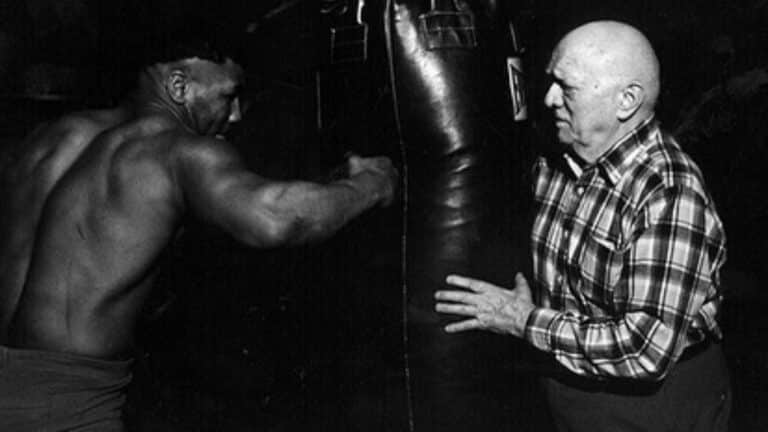Boxing Rules: The Complete Guide to the Rules of Professional Boxing

Boxing rules have evolved over the last three centuries into what we know them to as today. Most know the basic rules of boxing, but the rules of the sport are vast and need to be explained.
Here is our complete guide for the rules of professional boxing. Read below to learn everything you need to know about boxing rules and regulations that go into making an event.
The History of Boxing Rules
Boxing rules as we know them today have gone through an evolution since the 1800s. The first set of rules that attempted to organize the sport were the London Prize Ring Rules.
London prize rules were first introduced in 1838 and were used for the majority of events held during the century. These boxing rules were followed by Queensberry Rules, which became the blueprint of the modern rules of sport.
Thanks to the adoption of Queensberry boxing rules, the sport was able to evolve into one of the world’s biggest sports. As time has passed, boxing rules have continued to evolve to make the sport better and safer.
Governing Bodies & Commissions
Boxing rules are typically enforced by boxing commissions or governing bodies. Some of the biggest governing bodies include the WBA, WBC, WBO, and IBF.
Each governing body has their own rules and regulations that may vary, but the core boxing rules are the same.
On top of the different governing bodies, there are also various boxing commissions. In the US, each state has their own boxing commission that oversees boxing events.
Other countries also have their own commissions and groups that oversee fights. Most of these commissions use the official boxing rules of ABC Boxing or APBC Boxing.
Boxing Weight Classes
Under the official rules of boxing, all boxers are separated into their respective weight classes. This was done in order to keep fights fair and more competitive.
Between all of the top boxing governing bodies, they recognize over seventeen weight classes within men’s pro boxing.
- Heavyweight: Over 200 lbs(90.72 kg & Up)
- Cruiserweight: 200 lbs(90.72 kg)
- Light Heavyweight: 175 lbs(79.38 kg)
- Super Middleweight: 168 lbs(76.2 kg)
- Middleweight: 160 lbs(72.57 kg)
- Super Welterweight: 154 lbs(69.85 kg)
- Welterweight: 147 lbs(66.68 kg)
- Super Lightweight: 140 lbs(63.5 kg)
- Lightweight: 135 lbs(61.23 kg)
- Super Featherweight: 130 lbs(59 lg)
- Featherweight: 126 lbs(57.15 kg)
- Super Bantamweight: 122 lbs(55.34 kg)
- Bantamweight: 118 lbs(53.52 kg)
- Super Flyweight: 115 lbs(52.16 kg)
- Flyweight: 112 lbs(50.8 kg)
- Light Flyweight: 108 lbs(49 kg)
- Minimumweight: 105 lbs(47.63 kg)
(Note: Not all governing bodies use the all the same men’s weight classes and they also have slight alterations to the weights.)
Rounds & Durations
Since the adoption of the Queensberry boxing rules, all men’s pro boxing matches are set at three minutes each. Between each round, there is a one-minute break for the fighter’s to rest and recover.
The number of rounds in a boxing match depends on the level of the fighters fighting. Men’s pro boxing matches can be anywhere between: 4, 6, 8. 10, and 12 rounds.
Twelve round boxing matches are reserved for championship bouts.
Boxing Glove Sizes

Professional boxing rules on glove sizes are generally set between two glove sizes. Fighters in weight classes below 150 lbs(68 kg) use 8 oz gloves and fighters above this weight use 10 ounces.
This is not a specifically set rule for all boxers. In title bouts, fighters often negotiate the glove sizes that will be used within their matches.
Attire & Equipment
The attire and equipment used within boxing are the most known and obvious rules of the sport. All boxers must wear a mouthguard, groin protector, official boxing shorts, and shoes with soft-soles. These rules go for both the pro and amateur boxing ranks.
Boxing Officials
Under the official boxing rules of nearly every major commission,a boxing event must have six licensed ringside officials present.
- Referee
- Three Judges
- Ringside Physician
- Time Keeper
All six of these officials must be professionally licensed by their state or national commission where the event is being held.
Scoring System
The 10-point must scoring system is used within all professional boxing events. Winners of each round will receive 10 points and the loser of the round will receive 9 or less.
When fights go to a decision, the numbers will be tallied by the presiding judges and a winner will be declared.
Legal Boxing Moves
Under boxing rules, all legal boxing moves or strikes are performed with closed-fists to the front of an opponent’s body. All punches must also be executed above the belt and to the side of the head.
Illegal Boxing Moves
All of the major boxing commissions have the same boxing rules when it comes to illegal moves.
Illegal moves not permitted within a boxing match includes:
- Kicks
- Knees
- Headbutts
- Any Strikes Below The Belt
- Any Strikes To The Back Or Head
- Any Neck Strikes
- Strikes After The Bell
- Kidney Punches/Strikes
- Holds
- Spitting
- Eye Gouging
- Open Handed Strikes
Fouls & Penalties
If a fighter performs one of the illegal moves listed above or other fouls, they will be penalized. The presiding referee will give one of three penalties to a fighter who commits a foul.
- Warning
- Point Deductions
- Disqualifications
Warnings are for slight infractions, but if the foul is more severe or repeated, the referee may deduct points. For more severe and purposeful fouls, a referee may disqualify a fighter.
An example of a boxer being disqualified could be repeated low blows. A referee will likely disqualify a fighter for committing this foul multiple times after warnings and point deductions.
Ways to Wins a Boxing Match
A boxer can win a boxing match in one of four ways.
- Knockout
- TKO
- Decision
- Disqualification
TKOs & Knockouts

One of the boxing rules that casual fans often confuse is the difference between a TKO and a knockout. A fight is ruled a knockout whenever a fighter is knocked down and doesn’t answer the ref’s 10-count.
Technical knockout or TKOs are ruled when either the referee, ringside physician, or cornerman stops the fight. For example, if a boxer is knocked down multiple times and the ref steps in to protect them, it’s a TKO.
Stopping The Bout
To further explain stopping a bout within boxing rules, only the referee, ringside physician, or cornerman can stop fights. Stoppages by referees are the most common way as they’re the first line of defense for fighters.
If a fighter isn’t protecting themselves, the referee has an obligation to step in. Ringside physicians have the power to stop fights if they deem a boxer is too damaged to continue fighting.
A fighter’s cornerman can also stop a fight by either throwing in the towel or stopping the bout between rounds.
Drug Testing
Many of the top boxing promotions force their boxers to undergo drug testing. These tests are to ensure that the fight is fair and no boxer is trying to get an advantage over the other.
In title fights, boxers are tested before and after their matches to ensure that they are clean. Two of the biggest groups paid to oversee drug testing for boxing matches are VADA and WADA.
Positive drug tests can lead to fines, suspensions, and disqualifications depending on the results of an appeal
Pre-Fight Medicals
Within the boxing rules of every commission, boxers must undergo pre-fight medicals. Pre-fight medicals include physical and blood tests to ensure they are healthy to compete.
For boxers over the age of 35, they must undergo EKG testing on their hearts before being permitted to fight. If a medical condition is discovered, this can result in the postponement or even cancellation of a fight.
Weigh-Ins
Weigh-ins for all boxing matches are held the day before the event takes place. Within boxing, a fighter is not given a pound like in MMA and must weigh-in at or below their contracted weight.
Failure to make weight can result in fines or even cancellations if the fighter misses by more than 5 pounds.
Fighter & Corner Conduct
Boxers and their teams must adhere to a strict code of conduct before, during, and after the fight. Unsportsmanlike behavior can result in anything from fines, suspensions, disqualifications, and removal of licenses.
Rules For Cornermen

Under official boxing rules, the fighter isn’t the only person that must adhere to strict rule-sets. Their cornerman must also adhere to various rules before, during, and after the match.
All of the major governing bodies set out these rules for boxing cornermen:
- No More Than 4 Licensed Cornermen Are Permitted In A Fighter’s Corner
- One Chief Second Will Be Permitted To Enter The Ring Between Rounds
Permitted Cornermen Equipment
- Clean White Towels
- Petroleum Jelly/Vaseline
- Sterile Gauze
- Cotton Swabs
- Ice Bag
- Blunted End Scissors
- 1-In Adhesive Tape
- Eye Iron
Hand Taping
All major governing bodies have specific rules of fighters taping their hands. Their corner must use one-inch medical tape and gauze padding to wrap their hands.
The tape is not permitted to go over the fighter’s knuckles and any other material is not permitted. Generally a licensed official is present during the hand taping to ensure no rules are being broken.
Once the wraps are given the okay by the official, the fight is on.
Overview
Boxing rules may differ from each governing body and commission, but their core principles are the same. Since the sport of boxing began being organized, the rules of sport have been added and continue to evolve.
As time goes on, the rules will continue to evolve and improve the sport and the safety of the fighters.






